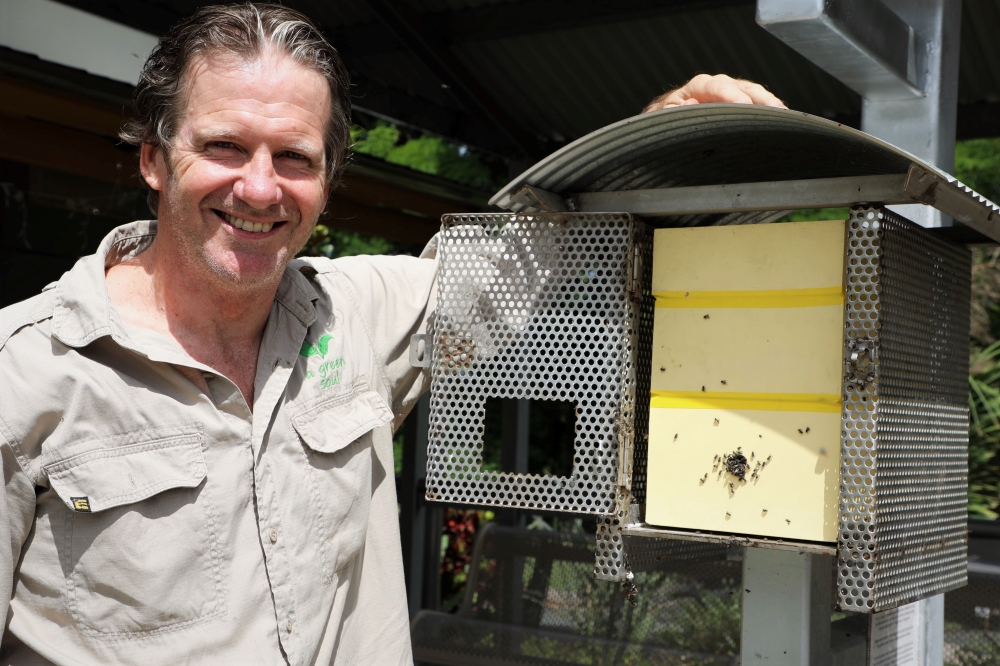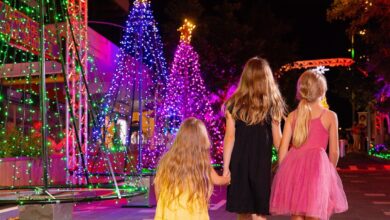There was plenty of buzz and excitement at the Ipswich Visitor Information Centre last week when its Australian native stingless beehive was split for the first time.
Environment and Sustainability Committee chairperson Councillor Russell Milligan said council is dedicated to greening the city as much as possible for the benefit of residents, native fauna and flora, and our environment.
“We all know how integral bees are to the ecosystem,” Cr Milligan said.
“They are responsible for pollinating native plants such as the ones council grows at the Queens Park Nursery, so we like to keep a hive at the Visitor Information Centre where people can come along and learn about them.
“Recently we noticed a lot of bees and bee activity at the hive. This can be a sign that the hive is ready to be split to propagate a second hive.”
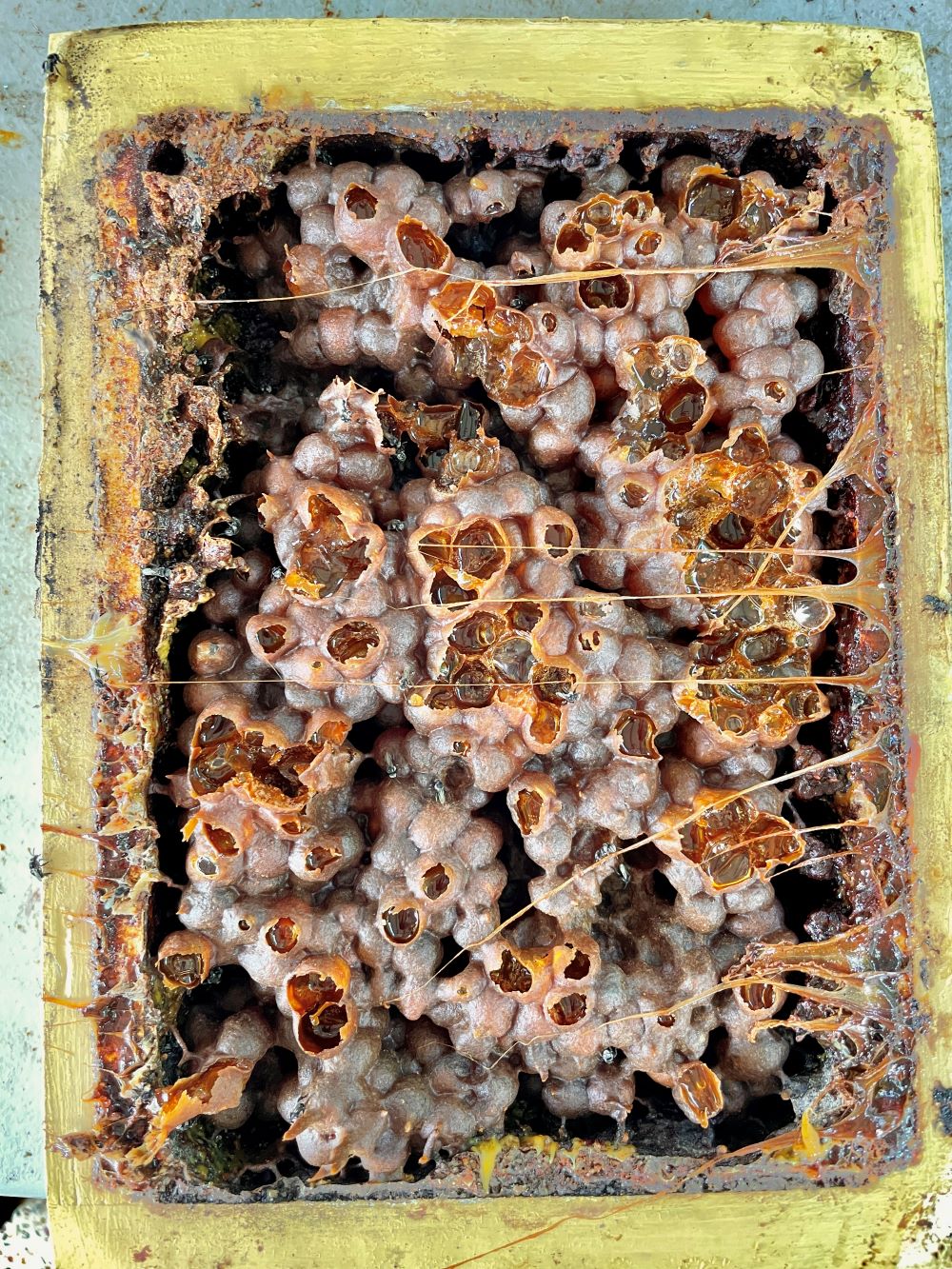
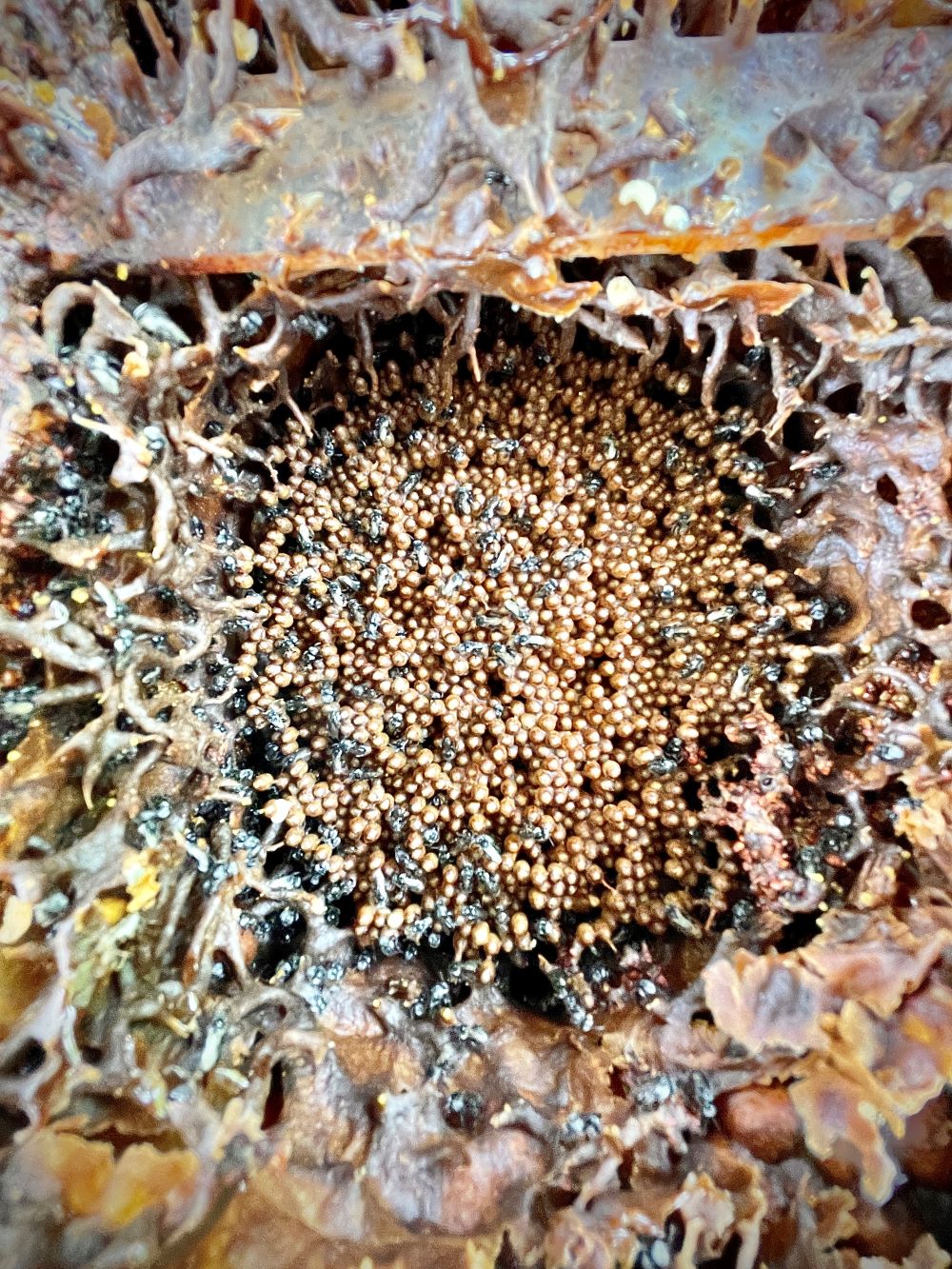
Inside the beehive – honey ‘sugarbags’, and the brood (nursery).
Splitting a hive is a delicate procedure as bees may become upset, so the president of the Australian Native Bee Association, Ian Driver, was invited to perform the split.
Mr Driver gently removed the beehive from its purpose-built box and lifted the lid to reveal ‘sugarbags’ of honey, and then the second part of the box to reveal the ‘brood’, or nursery. He then added two new sections of box to create two hives from the original hive.
“We have the queen in one of the hives, and a new queen will emerge in the other. We now have two functioning hives with plenty of room for the queens to lay eggs and build their community.
“More bees means more pollination of native plants and, of course, more honey.”
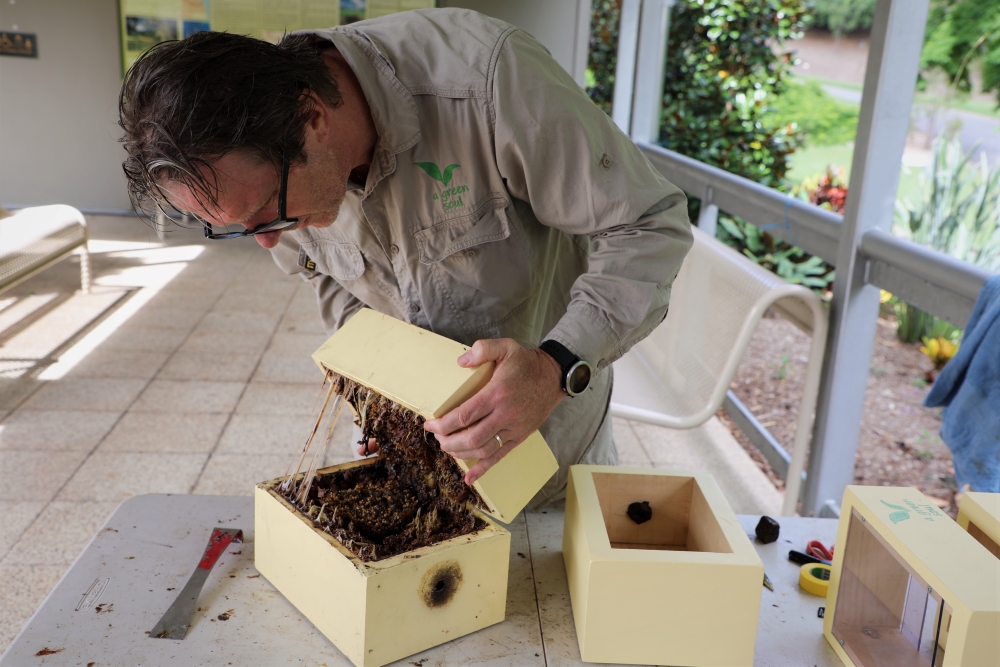
Ian Driver splitting the Ipswich Visitor Information Centre hive.
Mr Driver was able to harvest around 400ml of honey from the original hive.
“A stingless beehive can produce approximately one kilo of honey per year, whereas European honeybees produce 60 or 70 kilograms per year. Consequently, stingless bee honey is valued at about $200 a kilogram,” Mr Driver said.
“But the recent popularity of Australian native stingless beehives in people’s gardens is less to do with honey and more about the environment and sustainability.”
“However, anyone interested in keeping their own hive should be prepared to sit on a waiting list for a while. But it’s worth waiting for a reputable seller to ensure the health and wellbeing of the hive.
“If a beehive isn’t your thing, you can also help our native bees by protecting native vegetation, and planting pollen and nectar-rich native flowers in your garden.”
Once the hive was successfully split in two, Mr Driver sealed them tightly to protect them from pests and placed them in boxes designed to keep them safe from harm.
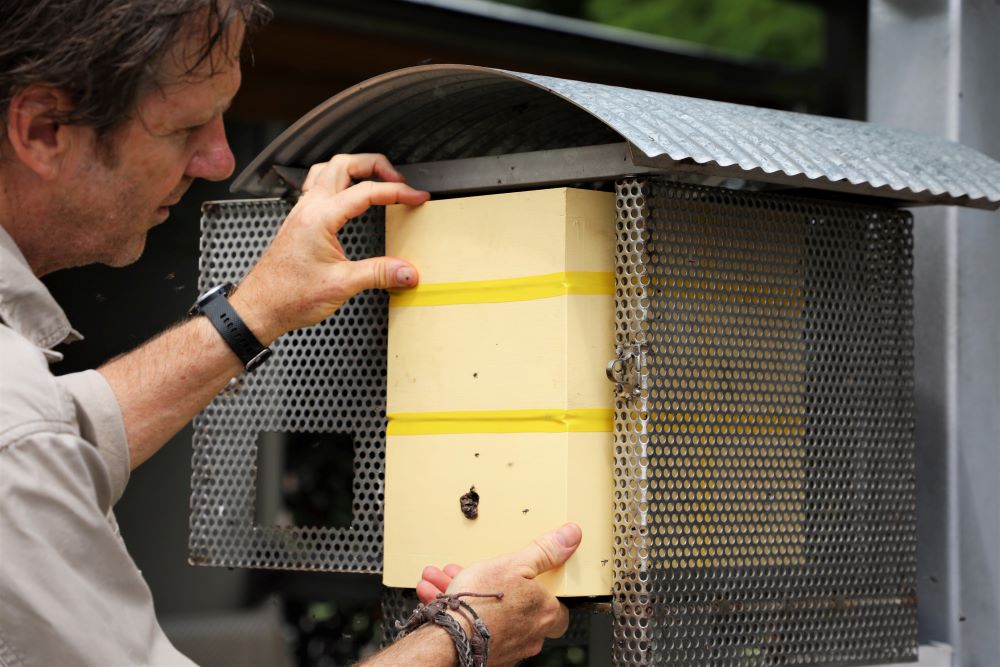
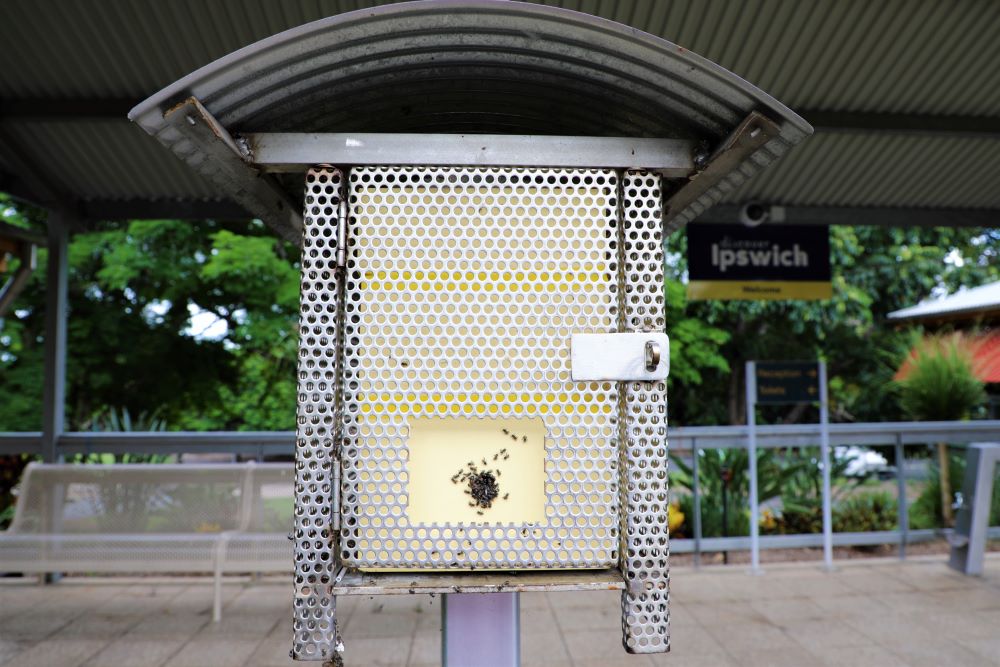
Purpose-built beehive boxes help keep the bees safe from harm.
Once the split beehives were returned to their purpose-built boxes, the bees eagerly swarmed back.
Australian native stingless beehive facts:
- Australia has around 2,000 different species of Australian native bees.
- The beehive queen cannot fly and lives in the hive up to four years.
- Worker bees live for about 100 days.
- A healthy Native Australian stingless beehive may contain up to 10,000 bees and generate up to 300 new bees each day.
Watch the beehive split on council’s Instagram page.
Ipswich City Council is committed to a community vision of a natural and sustainable future.
To find out more about how you can get involved, click here.
Read also:

